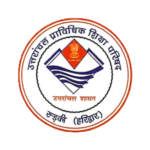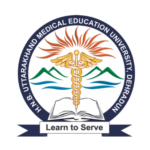In times of disaster, whether natural or man-made, the healthcare system faces unprecedented challenges. Among the key players in the response efforts are pharmacists, who bring a unique set of skills and knowledge essential for effective disaster management. By integrating into disaster response teams, pharmacists can significantly enhance the delivery of healthcare services. This blog explores the vital role of pharmacists in disaster relief efforts and emphasizes the importance of a well-developed pharmacy disaster preparedness plan.
The Role of Pharmacists in Disaster Relief

Pharmacists are healthcare professionals with extensive training in medications, patient care, and healthcare systems. Their expertise is crucial in disaster scenarios, where the demand for medical services often exceeds supply, and the risk of medication errors and drug shortages is high. Here are several ways pharmacists can contribute to disaster relief:
- Medication Management: In the chaos of a disaster, maintaining accurate medication records and ensuring the availability of essential drugs is critical. Pharmacists can oversee the distribution of medications, manage inventories, and prevent shortages.
- Patient Care: Pharmacists are equipped to provide direct patient care, including administering vaccinations, managing chronic diseases, and offering first aid. Their presence ensures that patients receive timely and appropriate care even in disrupted settings.
- Public Health Education: During disasters, misinformation can spread rapidly. Pharmacists can play a vital role in educating the public about health risks, proper medication use, and preventive measures.
- Support to Healthcare Teams: By working alongside doctors, nurses, and emergency responders, pharmacists can support the overall healthcare team, ensuring coordinated and efficient care delivery.
Developing a Pharmacy Disaster Preparedness Plan

A pharmacy disaster preparedness plan is essential for ensuring that pharmacies and their staff are ready to respond effectively to disasters. This plan should cover several key areas:
- Risk Assessment: Identify potential disasters that could affect the community and the pharmacy, such as earthquakes, floods, or pandemics. Assess the likelihood and impact of these events to prioritize planning efforts.
- Resource Management: Ensure that the pharmacy has sufficient supplies of essential medications, vaccines, and medical equipment. Establish relationships with suppliers and develop contingency plans for maintaining inventory during disruptions.
- Communication Protocols: Develop clear communication strategies to coordinate with local health authorities, emergency responders, and other pharmacies. This includes setting up communication channels and contact lists for rapid information sharing.
- Staff Training: Regularly train pharmacy staff on disaster response procedures, including medication management, patient care, and emergency protocols. Simulation exercises can help staff become familiar with their roles during a disaster.
- Emergency Pharmacy Services: Establish protocols for providing Emergency Pharmacy Services during disasters. This includes setting up temporary pharmacy stations, ensuring continuity of care for displaced individuals, and managing medication distribution in emergency shelters.
Implementing Emergency Pharmacy Services
Emergency Pharmacy Services are a critical component of disaster response. These services ensure that essential medications and healthcare are accessible to those affected by disasters. Here are some key aspects of implementing these services:
- Temporary Pharmacy Setups: In the aftermath of a disaster, pharmacists may need to establish temporary pharmacy stations in shelters, field hospitals, or community centers. These setups should be equipped with essential medications, medical supplies, and the necessary infrastructure to manage patient care.
- Mobile Pharmacy Units: Deploying mobile pharmacy units can extend the reach of Emergency Pharmacy Services to remote or hard-to-access areas. These units should be staffed with trained pharmacists and stocked with necessary medications and supplies.
- Coordination with Healthcare Providers: Effective delivery of Emergency Pharmacy Services requires close coordination with other healthcare providers. Pharmacists should work alongside doctors, nurses, and emergency responders to ensure comprehensive care for patients.
- Documentation and Record-Keeping: Maintaining accurate records of medications dispensed and patient interactions is crucial during disaster response. Pharmacists should implement robust documentation practices to track medication usage, monitor patient outcomes, and support continuity of care.
- Patient Support and Counseling: In addition to dispensing medications, pharmacists should provide support and counseling to patients. This includes educating them about their medications, addressing concerns, and offering guidance on managing health conditions during the disaster.
Conclusion
Pharmacists play an indispensable role in disaster relief efforts. By leveraging their expertise in medication management, patient care, and public health education, they can significantly contribute to the healthcare response in times of crisis. A well-developed pharmacy disaster preparedness plan is essential for ensuring that pharmacists are ready to respond effectively to disasters. This plan should include risk assessment, resource management, communication protocols, staff training, and strategies for providing Emergency Services.
By prioritizing disaster preparedness and integrating into the broader healthcare response, pharmacists can help mitigate the impact of disasters on communities and improve health outcomes for those affected. In a world where disasters are increasingly frequent and severe, the contributions of pharmacists are more critical than ever.






